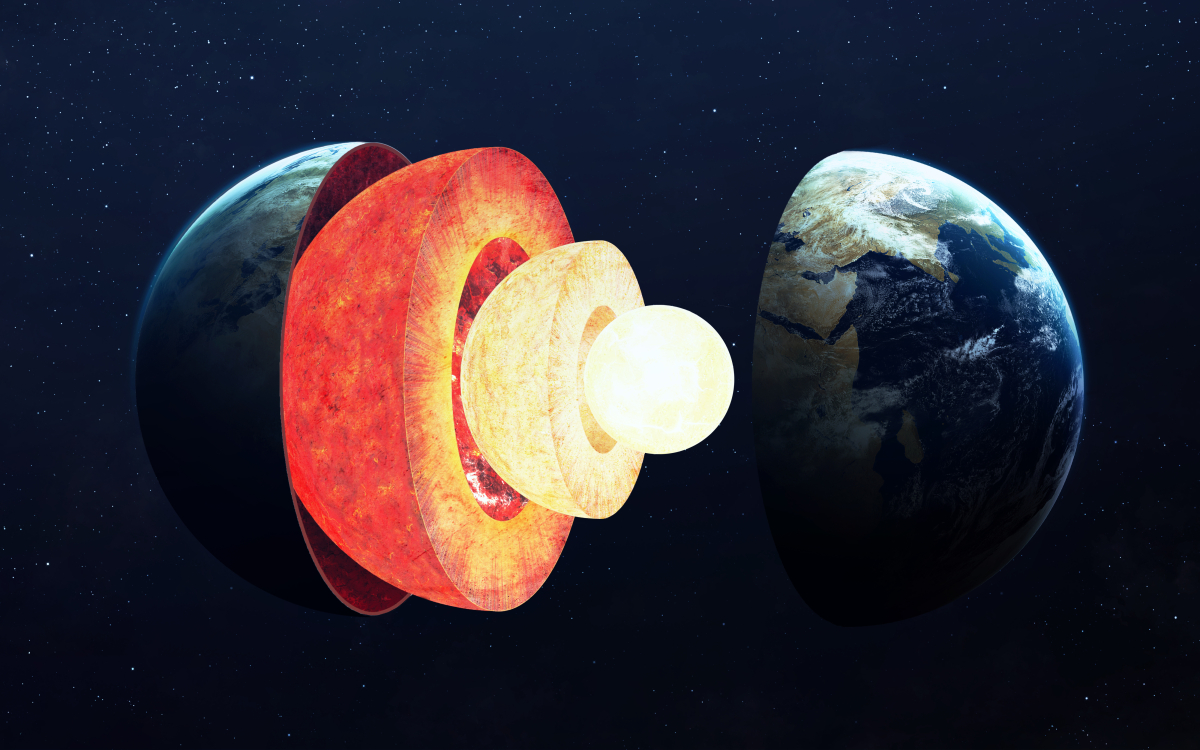Study discovers 650-kilometer-wide metal ball
The picture of the structure of the earth must probably be redrawn. While scientists previously assumed that the earth is made up of four different layers, they now assume with certainty that there must be another layer.
Along with the crust, mantle, outer and inner core, there appears to be something within the inner core that ANU seismologists refer to as the innermost inner core. It is said to be a massive “metal ball” with an extension of 650 kilometers.
Measuring the different speeds at which seismic waves enter and traverse the Earth’s core makes it easier to measure, according to a new study published in Nature Communications was published, hardly any other conclusion. However, the finding is not entirely surprising.
“The existence of an inner metal sphere within the inner core, the innermost core, was suggested about 20 years ago. We now provide another line of evidence to support the hypothesis,” explains ANU study leader Thanh-Son Phạm.
For his co-author, Professor Hrvoje Tkalčić, the discovery has above all the meaning of “telling us more about the past and the development of our planet”: “This inner core is like a time capsule of the evolutionary history of the earth – it is a fossilized one Record that serves as a gateway to the events of our planet’s past. Events that took place on Earth hundreds of millions to billions of years ago.”
To back up their discovery, the researchers analyzed the data from around 200 earthquakes of magnitude six and more over the past decade. They looked primarily at those seismic waves triggered by earthquakes, which pass directly through the center of the earth and emerge on the opposite side of the globe from where the earthquake triggered. From there they walk back to the source of the quake.
In simplified terms, we can imagine this process as comparable to a ping-pong ball bouncing back and forth. That was already known. However, the measurement accuracy of older instruments was not sufficient for the knowledge now gained.
“By developing a technique to amplify the signals recorded by densely populated seismograph networks, we have observed for the first time seismic waves bouncing up to five times the Earth’s diameter. Previous studies have only documented a single antipodal bouncing,” said Phạm.
Specifically, the researchers examined the anisotropy of the iron-nickel alloy that makes up the interior of the Earth’s core. The term anisotropy describes the acceleration or deceleration of seismic waves through the material of the Earth’s interior.
The effects indicate a different arrangement of the iron atoms in the Earth’s core. The crystallized structure in the innermost part of the earth’s core seems to be different than in the outer layer. This could explain why the waves accelerate or decelerate depending on the angle of entry as they penetrate the core of the core.
“There are still many unanswered questions about the innermost core of the earth, which could solve the mystery of the formation of our planet,” says Professor Tkalčić, dampening expectations of the significance of his team’s discovery.



